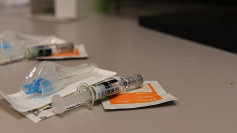Many people like a few alcoholic beverages, but how can you tell if the pastime has become harmful to your health? If you're wondering whether your drinking habits are cause for concern, you should know that the threshold for unhealthy drinking is far lower than you might think.
What is the recommended amount of alcohol for women?
Women, compared to men, develop alcohol use problems at lower levels of intake, according to research. Females, therefore, have fewer restrictions when it comes to low-risk drinking.
According to the National Institute on Alcohol Abuse and Alcoholism (NIAAA), women should consume no more than three standard drinks per day and no more than seven standard drinks per week.
Again, both the daily and weekly standards must be satisfied in order to remain in the low-risk group. If you're a woman who only has two drinks per day, but you have two drinks every day, that's 14 drinks per week, which is double the suggested low-risk drinking threshold.
What is the recommended amount of alcohol for men?
Low-risk alcohol consumption for men is defined as four or fewer standard drinks on any given day and less than 14 drinks in a given week. According to the NIAAA, in order to remain low risk, both the daily and weekly requirements must be met.
In other words, if a guy just drinks four regular drinks per day, but four every day, he will consume 28 drinks per week, which is double the recommended low-risk alcohol intake.
That is more than the four drinks per day, four days per week minimum.
When does casual consumption become abuse?
Many people consume beer, wine, and spirits without developing a harmful drinking problem. Even if you don't develop an alcohol use disorder, your alcohol consumption can jeopardize your health and well-being.
How much alcohol can you drink in a healthy level and still be called a low-risk drinker? What level of alcohol consumption will place you in the high-risk category?
According to the NIAAA's comprehensive studies, less than 2% of people who drink alcohol within the prescribed limits develop alcohol use disorders.
It's a good idea to assess your current drinking habits and see if you routinely exceed the low-risk drinking guidelines. You should think about cutting back or quitting drinking entirely. If you believe that your connection with alcohol is interfering with your mental health and well-being, do not delay in seeking treatment.






